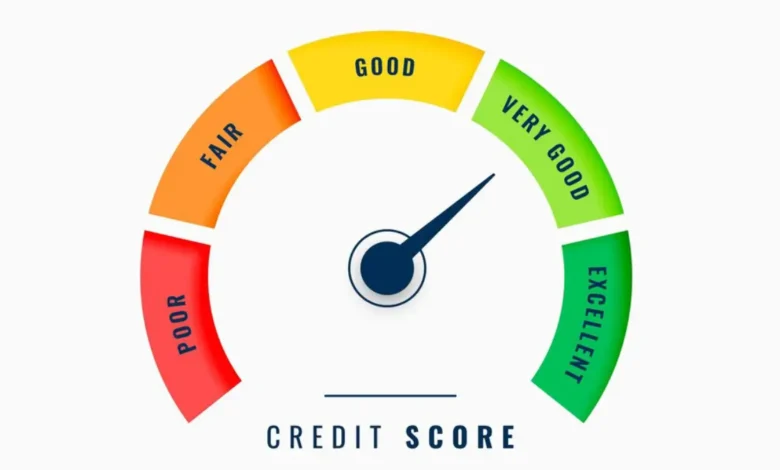How to Calculate Your Credit Score?
Do you know what your credit score is, or even how it’s calculated? Your credit score isn’t just a random number; it’s an essential element of your financial profile that lenders use to decide whether they should lend you money or not. But for many of us, the process behind calculating this crucial figure remains a mystery. If terms like ‘credit history’, ‘credit utilization rate’, and ‘hard inquiries’ sound Greek to you, don’t worry! You’re in the right place because we’re about to demystify these complex terminologies in layman’s language. In this comprehensive guide titled “How to Calculate Your Credit Score,” we will break down all aspects that contribute towards determining your numeric rating. So buckle up as we delve deep into understanding algorithms used by bureaus and ways for improving those important three digits contributing significantly towards our financial independence!
Key Factors That Affect Your Credit Score
- Credit History (35%)
Your payment history makes up the largest portion of your score. Making timely payments on credit cards, loans, and mortgages will positively impact your score. - Credit Utilization (30%)
The percentage of your available credit that you’re using is a major factor. It’s recommended to keep your credit utilization below 30%. - Credit Age (15%)
The length of your credit history matters. Older accounts positively impact your score, so keep older credit cards open, even if you’re not using them. - Credit Mix (10%)
Having a variety of credit types (credit cards, auto loans, mortgages) is beneficial, as it shows you can manage different types of debt responsibly. - Hard Inquiries (10%)
When a lender checks your credit score (like when applying for a loan), it results in a hard inquiry. Too many hard inquiries in a short time can lower your score.
Understanding the Components of Your Credit Score
Your credit score is a numerical representation of your creditworthiness, and it plays a crucial role in determining your financial health. To calculate your credit score, it’s essential to understand the components that go into it.
Key Components of Your Credit Score:
- Payment History (35%)
- This includes whether you have paid your bills on time, missed payments, or any delinquencies.
- Amount Owed (30%)
- This refers to your credit utilization ratio, which is the amount of debt you have compared to your available credit.
- Length of Credit History (15%)
- Considers how long you have had accounts open and the average age of your accounts. A longer credit history is seen as more favorable.
- Types of Credit (10%)
- Considers the variety of credit accounts you hold, such as credit cards, loans, and mortgages.
- New Credit Inquiries (10%)
- Reflects how often you apply for new credit. Multiple inquiries within a short period can lower your score.
Table of Credit Score Components:
Understanding how to calculate your credit score is essential to managing your financial health. Your credit score is determined by several key factors, which together create a numerical representation of your creditworthiness. Here’s a breakdown of how your credit score is calculated and what you can do to improve it.
Key Factors in Calculating Your Credit Score:
| Factor | Percentage Impact | Description |
|---|---|---|
| Payment History | 35% | Your track record of paying bills on time, including any missed or late payments. |
| Credit Utilization | 30% | The ratio of your credit card balances to your credit limits. Ideally, keep this under 30%. |
| Length of Credit History | 15% | The average age of your credit accounts. A longer history with responsible credit management is better. |
| Credit Mix | 10% | A mix of credit types (credit cards, loans, mortgages) can positively affect your score. |
| New Credit | 10% | Opening new credit accounts can temporarily lower your score, but responsible use can help over time. |
How to Calculate Your Credit Score:
To calculate your credit score, each factor is weighed based on its percentage impact on your overall score. Here’s how each factor contributes to your final score:
- Payment History (35%): Ensure all payments are made on time. Late payments can significantly harm your score.
- Credit Utilization (30%): Keep your balances low compared to your credit limits. The lower the utilization, the better.
- Length of Credit History (15%): A longer history of managing credit responsibly can boost your score.
- Credit Mix (10%): Having a variety of credit types is beneficial for your score.
- New Credit (10%): Opening multiple new accounts in a short time can hurt your score. However, responsible management of new credit can improve it over time.
The Role of Payment History in Credit Scoring
One of the most significant factors in determining a person’s credit score is their payment history. Lenders rely heavily on this information to assess a borrower’s creditworthiness and ability to repay debts.
Key Points:
- Late Payments: Late or missed payments can significantly lower your credit score.
- Defaults and Collections: Defaults or accounts sent to collections have a serious negative impact on your score.
- On-Time Payments: A history of on-time payments can improve your credit score and demonstrate your reliability as a borrower.
Why Payment History Matters
Payment history typically accounts for about 35% of a person’s FICO credit score, making it crucial for maintaining a good credit standing. Consistently making timely payments on all accounts:
Prevents Negative Impacts: Late payments or defaults can damage your credit score, making it harder to secure favorable loan terms.
Boosts Your Credit Score: On-time payments can improve your creditworthiness.
Impact of Credit Utilization on Your Score
Credit utilization plays a significant role in calculating your credit score. It refers to the ratio of your current credit card balances to your available credit limit.
Key Points:
- High Credit Utilization: Using a high percentage of your available credit can signal financial stress and lower your credit score.
- Recommended Credit Utilization: To maintain a healthy score, it’s generally advised to keep your credit utilization below 30%. For example, if your total credit limit is $10,000, aim to keep your outstanding balance under $3,000.
Why Credit Utilization Matters
Credit utilization accounts for approximately 30% of your credit score, making it crucial to manage. Keeping your credit utilization low helps:
- Improve Your Credit Score: Low utilization shows that you’re not overextending yourself financially, which is a positive indicator for lenders.
- Maintain Financial Health: Monitoring and reducing credit card debt keeps you within healthy borrowing limits and improves your financial standing.
By managing your credit utilization and keeping it below 30%, you can improve your credit score and enhance your financial profile.
Length of Credit History and its Influence
The Impact of Credit History Length on Your Credit Score
The length of your credit history is an important factor in calculating your credit score. It reflects the amount of time you’ve had open accounts and how long you’ve been managing credit.
Key Points:
- Proven Track Record: A longer credit history gives lenders more information to assess your ability to handle debt responsibly, which can work in your favor.
- Positive Impact of Long History: If you’ve had accounts open for many years and have consistently made on-time payments, it can significantly boost your credit score.
- Challenges with Short History: A shorter credit history may limit lenders’ ability to gauge your financial reliability, potentially resulting in a lower credit score.
Why Credit History Length Matters
- Improves Credit Score: A lengthy, positive credit history demonstrates your experience with managing credit responsibly.
- Lenders’ Confidence: The longer your credit history, the more reliable you appear to potential lenders, as they have more data to evaluate your financial habits.
Maintaining older accounts and managing them responsibly can positively influence your credit score over time, so it’s essential to be mindful of the impact your credit history has on your financial health.
How New Credits and Types of Credits Affect your Credit Score
The diversity of credit types and the age of your credit accounts are significant factors to calculate your credit score. A healthy mix of credit accounts can positively impact your credit score, while opening new accounts too frequently may temporarily lower it. Below is a breakdown of how credit types and new credit accounts influence your score.
Key Factors in Credit Types and New Accounts:
| Factor | Impact on Credit Score |
|---|---|
| Diverse Credit Mix | A mix of credit types (e.g., credit cards, mortgages, installment loans) shows lenders you can manage various credit responsibly, which positively impacts your score. |
| Age of Credit Accounts | The longer your accounts have been open, the better it is for your score. A longer credit history builds trust with lenders. |
| New Credit Applications | Opening new accounts can temporarily lower your score, especially if many accounts are opened within a short period. |
| Responsible Management | Consistently making on-time payments and managing new credit responsibly helps improve your score over time. |
How to Manage Credit Types and New Accounts Effectively
- Diversify Your Credit: Having a mix of different credit types (credit cards, loans, and mortgages) shows your ability to manage multiple financial products.
- Be Cautious with New Credit: While new credit accounts can lower your score temporarily, using them responsibly can boost your credit over time.
- Monitor Your Credit: Regularly check your credit report to ensure your credit types and account status are accurate and up-to-date.
By strategically managing the types of credit you use and being cautious about opening new accounts, you can ensure that your credit score improves over time.









